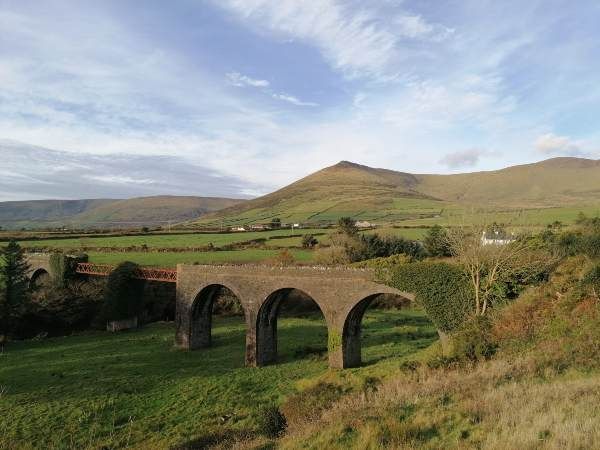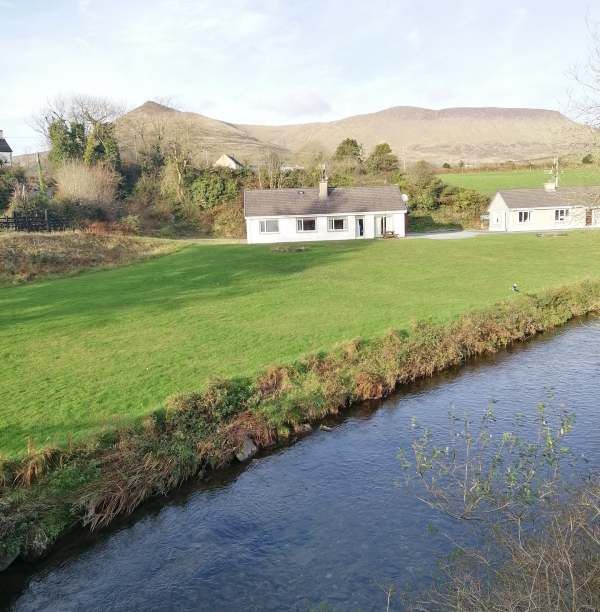A Story from the Village of Lispole....

Lios Póil - 'Gateway to the Gaeltacht'
A chairde, welcome back to ‘Tales of a Tourism Officer’! I hope you have all had a good week and to our American friends: A very Happy Thanksgiving! I hope you were able to celebrate with your families in some way yesterday despite the current circumstances. Here in Ireland, we are another week closer to the end of the current restrictions, though we still don’t know what the next few weeks will hold in terms of travel and businesses being able to open. It is all just one long waiting game! However, in the last week or so Christmas decorations have slowly started to appear along the Dingle Peninsula – several shop windows are now beautifully decorated and a few early birds have put lights on their homes, creating a beautiful sprinkling of light in the night time landscape. Seeing the Christmas decorations start to appear provides a sense of hope, reminds us that the tough year of 2020 will shortly come to a close, and most importantly, that there is still so much beauty and wonder in this current world of chaos. December is a month of magical moments, and seeing the decorations appear this week has been a lovely reminder of that….

This week I am bringing you a story from the small village of Lispole on the Dingle Peninsula. Lispole is located halfway between the larger village of Annascaul and Dingle town. It is the small corner of the Dingle Peninsula that I call home and, while I may be slightly biased, it is absolutely beautiful and often goes unnoticed. So, I am bringing it front and centre to you all today! There is a river that runs through Lispole, called ‘Abhainn an Lóndraigh’ flowing peacefully from one end of the village to the other, under the old railway bridge that once guided the train from Dingle to Tralee. Under the main road that now brings people from far and wide through our little village to the town of Dingle. Today I am going to tell you the story of how the river got its name. It’s a story I was told by my teacher back in primary school, and it has always stuck with me because of its utter uniqueness. Hopefully you’ll enjoy!
The story begins with a tale of two families, Muintir Uí Londraigh and Muintir Uí Ghearaltaigh, who each had land either side of the river. These two families were notorious for competing with one another, and their lifelong feud was well known throughout the village, to who’s land the river belonged was without a doubt the biggest bone of contention between the two families, and they had spent a lifetime trying to lay claim to the heartbeat of the valley. Eventually the feud reached boiling point and when it was clear that no compromise could be reached amongst the parties, it was brought before the local judge. Given that both possessed the land that ran along the banks of the river on either side, it was clear that they were both equally entitled to the river. Therefore, it was decided that the family who could alter the appearance of the river in the most significant way by the end of the week would be granted claim to the river, and have it in their name.

Over the next week, both Muintir Uí Londraigh and Muintir Uí Ghearaltaigh focused on changing the appearance of the river. Muintir Uí Ghearaltaigh set about digging a trench in an attempt to change the direction in which the river flowed. They worked day and night, working together as fast as they could, hoping to lure the water in another direction. Meanwhile, Muintir Uí Londraigh observed and watched Muintir Uí Ghearaltaigh’s frantic attempt, while they planned their own alterations quietly and calmly. On the morning of the final day, when the judge would decide whose change was most significant, Muintir Uí Londgraigh arose before dawn and enlisted the help of their neighbours. Together, they gathered up the fresh milk from every cow that graced the green fields of the village, and when it came time for the decision, dumped every bucket of milk into the river, so that it ran white.

The judge’s decision was easy. Unfortunately, Muintir Uí Ghearaltaigh’s feeble attempt at digging an alternate route for the river was in vain, as the river continued to flow in the direction it always had. Muintir Uí Londraigh, however, had managed to make the river run white for the morning, and so it was christened Abhainn an Londraigh. Since then, the river has run quietly yet persistently through the village of Lispole, carrying the tale of its name.
So, there you have it, the river that runs quietly under the bridge so many people drive over when visiting the Dingle Peninsula actually has quite an interesting story behind it! Though many visitors simply pass through Lispole, it is a place that has many a story to tell. This is just one of them. Maybe on your next trip to the Dingle Peninsula you can stop and see for yourself!
Until next week,
Fallon